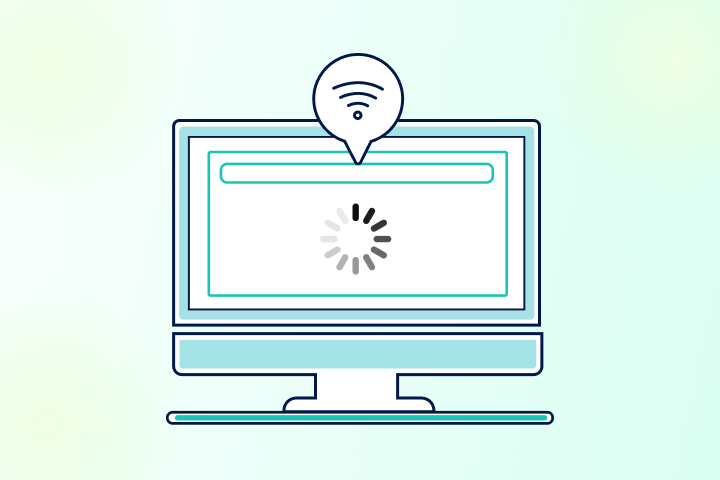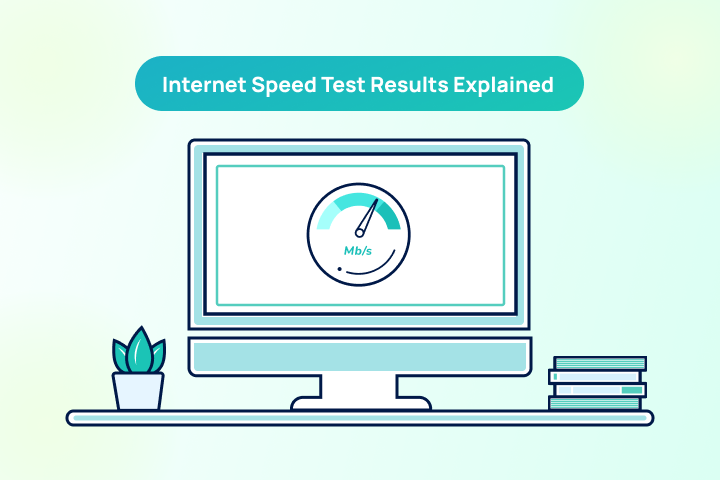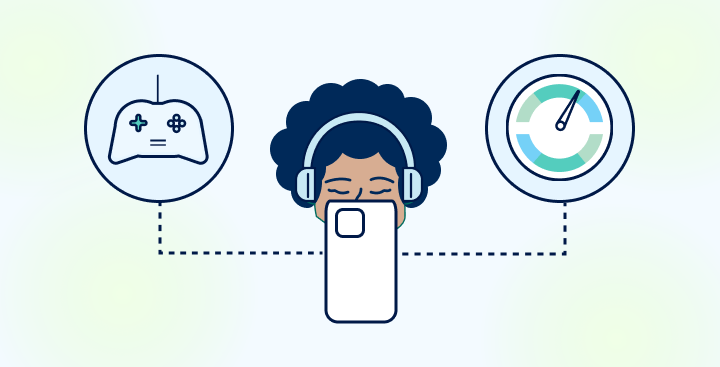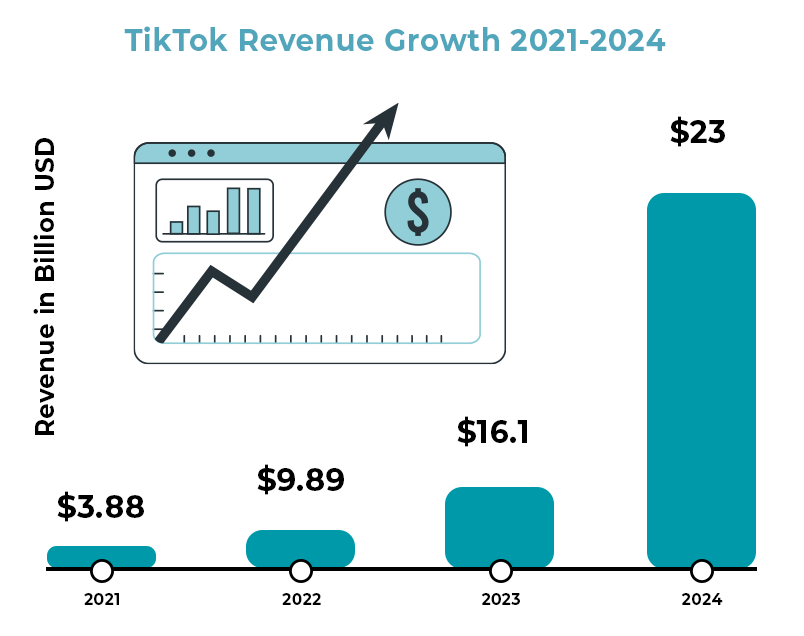If you constantly find yourself asking, “Why is my internet so slow?” while waiting for movies or websites to fully load, there could be various reasons related to your internet provider. We’ve compiled a list of the most common causes for poor internet service, including factors specific to different internet providers, to help improve your home internet experience.
1. Your Browser History is Full
The first and easiest thing to check when your internet takes a dip is your web browser history. It’s easily forgettable but has a direct impact on your internet latency. As you visit different websites, your browser automatically collects and saves bits of data about your browsing history. As the data builds up, your browser requires more bandwidth than normal to perform optimally.
Quick Fix: Clear your browser history
A simple fix is to clear your entire browser history including cookies and cached websites on a regular basis. This applies to all devices that have browser capabilities – smartphones, tablets, computers, and even smart TVs. You should notice improved response times almost immediately after clearing your browser cache.
2. Your Devices are Outdated
Technology is always evolving and older models are phased out. Older devices typically cannot support faster networks like cable internet or fiber internet, which could cause latency issues or no connectivity at all sometimes. If you have an older internet-capable device, it may be time for an upgrade.
Quick Fix: Upgrade your devices
While upgrading does cost money, there are many cheap options for newer devices today. There are even programs like Apple Trade-In and Best Buy Trades where you can swap older devices for store credit on a new purchase. Once you upgrade your device, you are likely to see a drastic improvement in your internet experience.
3. Too Many Devices are Online
All devices on a network share a finite amount of bandwidth. Your WiFi router determines which devices need more, pulling from each to ensure all devices have some sort of connection. So, as you connect more devices to your network, you run the risk of using up all your bandwidth and overloading your internet equipment. This leads to latency issues and a poor user experience for everyone.
Quick Fix: Disconnect devices not in use
Try disconnecting devices throughout your house that are not currently being used. Of course, don’t add your smart fridge and home security system to the shortlist, but consider unplugging things like your Roomba, shower speaker, and TV when not in use. You should see a noticeable difference in your internet afterward.
4. Your Network is Set to Public
If you’re running low on bandwidth, it might be because your home network is open to the public. An open network allows anyone within signal range to use your internet without a password. This is bad for two reasons. First, more connected devices means more congestion and slower speeds. Second, your network is left vulnerable to online cybercrimes. Both of these lead to slow internet.
Quick Fix: Create a WiFi password
The easiest solution to this problem is to create a strong password for your network. This allows you to limit the number of people and devices that can access your internet, which in turn conserves the bandwidth you pay for. We recommend using a complex series of eight or more upper and lowercase letters, symbols, and numbers for this password, which you update at least once every 3-6 months.

5. You Haven’t Reset Your Equipment
Like all things that require energy, electronics need regular maintenance and rest to function at peak capacity. If you’re experiencing slow internet speeds, it may be your internet equipment signaling to you that it needs a break.
Quick Fix: Restart your router and/or modem
Your modem is what delivers internet signals from your provider to your home, and your router is what connects your devices to WiFi. Restarting one or both is an easy way to troubleshoot slow internet issues and refresh their connections. What’s more, it only takes about two minutes. We recommend performing this task on a monthly basis by either setting a reminder on your phone or using an outlet timer to automatically reset plugged-in devices for specific outlets. This will also help preserve your equipment for as long as possible.
6. Your Router Needs a Better Spot
Right now, where is your router located in your home? Is it shoved under a desk or tangled in cords behind your TV? If the answer is yes to any of that, you’ll want to consider relocating your internet equipment.
WiFi signals travel in waves and need room to disperse throughout a home. Obstacles like large furniture or wires can easily disrupt this signal. So, you want to think about the location you pick for your router to help it “breathe” so to speak.
Quick Fix: Relocate your router
If you live in a one-story home, the best place for your router is in the center of the house away from other cords or large pieces of furniture. If you live in a multi-story home, it is best to place your router on the highest level as WiFi signals also travel downward better than upward.
Aside from that, it’s best to place your equipment on the highest level of furniture in your home, off the floor, and as far away as possible from areas with a lot of wires like your TV or computer station. This helps eliminate potential signal interference.
7. Furniture is Blocking Signal
In addition to your router placement, it’s possible that your slow WiFi is caused by the furniture arrangement in the home. WiFi signals travel best when there are no obstacles blocking their path. Objects made of thick materials like wood, metal, and sheetrock are common barriers to a stable WiFi connection. Sometimes, slow internet can be caused by your decorating as much as it can be caused by the placement of your equipment.
Quick Fix: Rearrange your furniture
With a bit of rearranging, you can easily improve the performance of your home internet. Consider moving larger pieces of furniture like couches, desks, and beds to the exterior walls of your home to allow WiFi signals to pass through rooms easily. Also, ensure that your router is placed in a central, open space with the least amount of walls close by.
8. Your House is Too Big
Have you ever noticed that the farther away you are from your router, the worse your connection gets? This happens because WiFi signals slowly weaken and dissipate as they travel farther from the source (your router). On top of this, other physical barriers like furniture and walls can work negatively against the overall performance of your internet. Large homes frequently have this problem.
Quick Fix: Invest in a WiFi booster
It’s unrealistic to expect you to purchase all new furniture or knock down walls to improve your slow internet. A more reasonable solution would be to invest in a WiFi extender or Mesh WiFi system to help boost your WiFi signal throughout your home. These devices are easy to set up and range in price from a few to a couple of hundred dollars.
9. Your ISP is Throttling Your Speeds
While rare, your slow internet could be due to ISP throttling. This is when a provider intentionally slows down a customer’s internet speeds to either regulate network congestion or stop illegal search activity. It’s not a great user experience, which is why many providers have stopped throttling speeds or at the very least offer unlimited data options to sidestep this. If you already have unlimited data, another way to avoid ISP throttling is using a virtual private network (VPN).
Quick Fix: Use a VPN
An ISP chooses who to slow down based on a user’s IP address. This is a digital identifier that connects a user to their online activity. Using a VPN will reroute all of your data through their secure servers, so your actual IP is hidden from your service provider. It’s the easiest way to avoid ISP throttling and costs less than a cup of coffee a month for most subscriptions.
10. You’re Paying for a Slow Internet Plan
If none of the solutions above did the trick, it may be time to upgrade your internet plan to include faster speeds. A common cause for slow internet is people not having enough bandwidth to keep up with their digital needs. Different internet activities require different amounts of bandwidth, and no matter what you do, there’s always a limit to what you pay for.
Quick Fix: Upgrade your internet plan
We all go through different seasons in our lives that require more or less internet. If your current service isn’t cutting it for you, consider upgrading your plan. Start by testing your internet speed to get an idea of what’s not working. Then, factor in things like how many people live in your home, how many devices you typically have connected, and what types of internet activities you regularly use (from streaming to mobile gaming apps). This will help determine the best internet speed for you to sign up for next.
11. Limits with Bandwidth Caps
Some Internet Service Providers (ISPs) set limits on the amount of data you can use each month. Going over these limits can significantly slow down your internet speeds, or you might face extra charges. This limitation is especially problematic for users who consume a lot of data by streaming HD videos or downloading large files.
Quick Fix: Monitor your data usage
Regularly monitor your data usage to avoid exceeding your plan’s limits. Consider switching to a plan with higher data caps or unlimited data, particularly if you frequently hit or exceed your monthly allowance.
12. You Have Outdated or Damaged Cables
Over time, the physical cables connecting your home to your ISP, such as coaxial cables for cable internet or fiber-optic cables for fiber connections, can wear out or suffer damage. This can result in inconsistent internet speeds and frequent disconnections.
Quick Fix: Regularly inspect your cables
Regularly inspect your cables for signs of wear or damage and replace them if necessary. If you’re unsure, contact your ISP for a professional assessment and potential replacement of your external connectivity infrastructure.
13. Interference from Neighboring Networks
In densely populated areas, such as apartment complexes, your WiFi might experience interference from networks nearby. This is often due to overlapping WiFi channels, leading to signal disruption and slower internet performance.
Quick Fix: Analyze your WiFi
Use a WiFi analyzer tool to find the least crowded channel and switch your router to it. Also, consider a router that supports dual-band frequencies to utilize the less congested 5GHz band.
14. You’re Running Background Applications
Applications running in the background, like automatic updates, cloud syncing services, or even malware, can use up a significant portion of your bandwidth, slowing down the internet for other uses.
Quick Fix: Check for unnecessary background applications
Check and close unnecessary background applications. Schedule heavy bandwidth activities like updates for off-peak hours and ensure your system is protected against malware with reliable security software.
15. Use During Peak Hours
Internet speed can vary significantly throughout the day, with speeds typically slowing during peak usage times. These times can depend on your location and the specific infrastructure of your ISP.
Quick Fix: Use off-peak hours
Plan your high-bandwidth activities, such as downloading large files or streaming in high definition, during off-peak hours when fewer people are online.
Optimize Your Internet Experience: Beyond Troubleshooting
As we navigate through our digital lives, armed with the knowledge of how to address slow internet speeds, it’s also important to maintain a dialogue with our ISPs about improving infrastructure and technology. This ensures faster, more reliable, and secure internet for everyone.
While this guide offers valuable solutions, it’s important to consider your needs when choosing an ISP. Here’s a quick breakdown:
- For value and basic needs: Centurylink internet offers reliable DSL plans perfect for browsing and email.
- For top speed and reliability: Earthlink internet is a strong choice for fiber internet thanks to its high-performance network.
- For remote locations: Starlink internet provides a reliable satellite internet option with advanced technology.
- For a balance of speed, affordability, and everyday use: Consider Xfinity internet for their cost-effective cable internet plans.
By staying informed and considering your needs, you can choose the best internet option for a smooth, fast, and efficient online experience.





